Immaculate Conception
Introduction
Text-to-speech Audio
In the 1870s, a large community of German Catholics called St. Joseph home. They formed the Immaculate Conception Parish and a substantial complex of four structures were built on South 10th Street. As the newer immigrants came to the city from Poland and other parts of Eastern Europe, initially they worshipped at Immaculate Conception. But they became dissatisfied with the German-language services and formed their own parish of SS. Peter and Paul on Messanie Street. When SS. Peter and Paul was closed in 1978; the alters from that church were installed at Immaculate Conception.
Images
Immaculate Conception
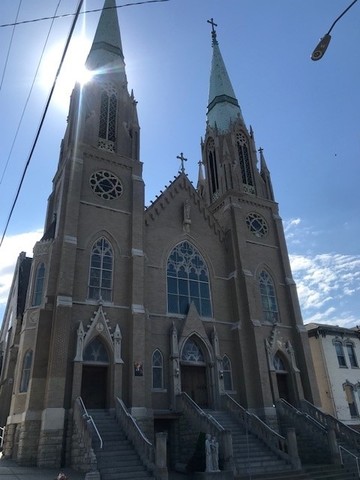
Immaculate Conception
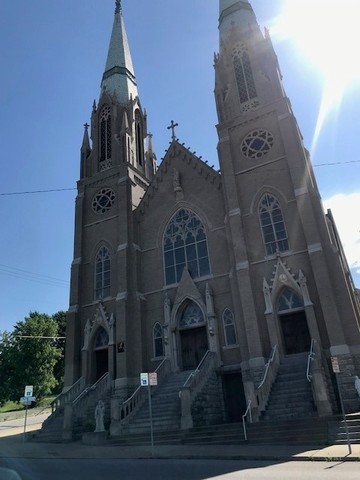
Immaculate Conception and the Convent and School Buildings associated with it
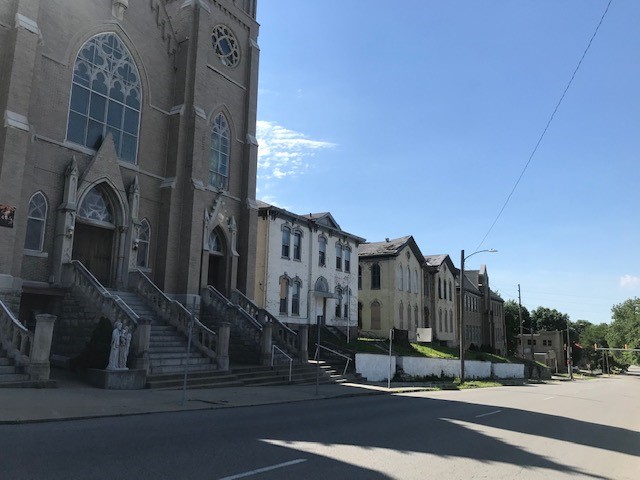
The Convent and School Buildings in the Immaculate Conception complex
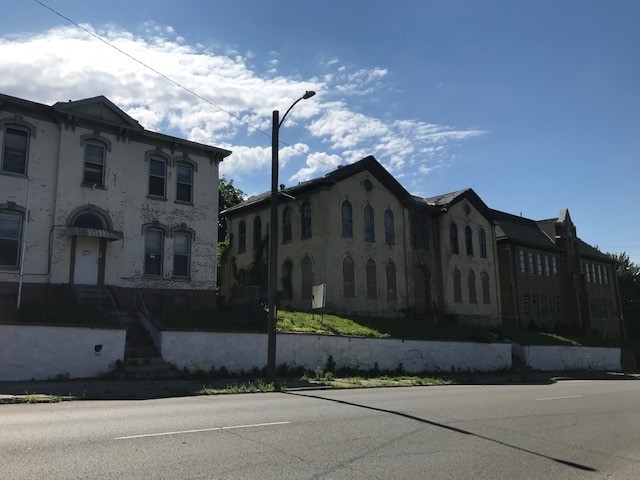
1897 Sanborn Map showing the Immaculate Conception Complex
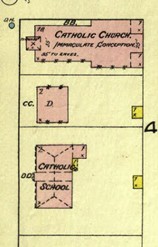
1911 Sanborn Map showing the expanded Immaculate Conception Complex
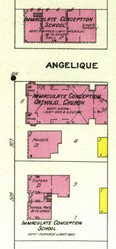
The Nave when first completed in 1910

Celebrating Immaculate Conception's 75th anniversary in 1935
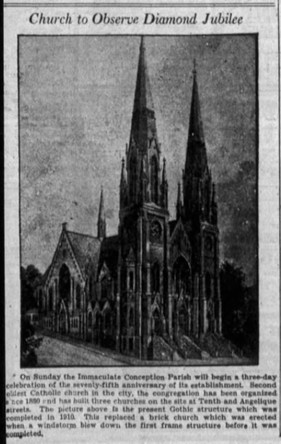
Backstory and Context
Text-to-speech Audio
: German speaking immigrants created the parish of Immaculate Conception and its complex of four structures on South 10th Street. The first baptism in the parish is recorded as occurring on Oct. 13, 1860. In 1868, the first Immaculate Conception church was erected on the site. The rectory and convent – the middle two of the four structures – were built in the 1870s, making them among the oldest structures in St. Joseph. The original church that stood on the site was quite modest and in 1906, the pastor, Father Linnenkamp suggested to the parish that a more impressive structure be built. The congregation raised $35,000 and Linnenkamp added $22,000 of his own money and the congregation turned to St. Joseph’s most famous architect, E.J. Eckel, to build the new church. The church was dedicated on January 16, 1910. What Eckel created is nothing less than a masterpiece of Gothic Revival architecture. At the time of its dedication, the News-Press described it: “The new Immaculate Conception Church is regarded as the most artistic ecclesiastical building in the West. Its design is a modernized Gothic, in which the essentials of that style are preserved without obstructing the view of the main alter, as is generally the case in churches of pure Gothic design. The body of the building is of gray vitrified brick and the trimmings, tracery, and castings are of Bedford stone, the approaches being, however, of New Hampshire granite. The roof is of slate, supported by steel. . . The interior ornamentation is of stucco, supported by steel. The altars, stations, and other furnishings harmonize in design and scheme with the character of the building and the effect is charming. All is delicate, subdued, and sweet and the atmosphere of sanctity pervades. . . . The chandeliers and brackets are of dull brass, while the sanctuary lamp is a wonderful bit of metal filigree done in gold. The pews, confessionals, communion railing and general woodwork are of oak. The altars are exquisite examples of the woodworkers’ craft coated with white enamel and tipped with gold.” Among its most striking elements are the stained-glass windows from Innsbruck, Austria depicting the life of Mary. The interior frescoes by Theodore Brash were completed in December 1916. The church towers over much of the city due to its location on a hill and the impressive 146-foot height of the spires; giving the site its local name, “Twin Spires.”
From 1867, there was a school as part of the site; the structure on the southeast corner of 10th and Messanie Streets was once the school. In 1889, the school had an enrollment of about 400 students. In 1968 the Diocese of Kansas City/St. Joseph announced that it was considering the closure of the school due to low enrollment (at that time it had 120 students being taught by four nuns).
At the northeast corner of 10th and Angelique, where a parking lot is now located, was once the parish hall and also served as a part of the school. It was demolished in 1957.
In 1978, the parish of SS. Peter and Paul was closed and merged with Immaculate Conception; the new parish was renamed Queen of the Apostles. In 1992, the Catholic Diocese of Kansas City/St. Joseph decided to close the Queen of the Apostles parish and planned to demolish the four buildings of the complex. Community outcry and activism convinced the Diocese to deed the complex to the newly formed Twin Spires Inc. along with a grant of $75,000. The grant was matched by the City of St. Joseph and the funds were utilized to rehabilitate the school building for use by a group working with the mentally challenged. For a time, the rectory served as a group home and the church itself was a popular wedding and event venue as well as a museum to the religious history of St. Joseph. Unfortunately, that was not the end of the story. Since that time, all of the structures have suffered badly from neglect and vandalism and their future is in real doubt. There are plans to convert the church into a Pro-Life shrine, but currently it is also deteriorating.
Sources
“The Four Parishes,” The St. Joseph Herald, Jan. 1, 1889; “Subscriptions are Rolling In,” The Catholic Tribune, Jan. 25, 1908; “Beautiful Church Ready for Worship,” St. Joseph News-Press, Jan. 15, 1910; “MGR. Linnenkamp’s Golden Jubilee,” St. Joseph News-Press, March 19, 1914; “Jubilee for Church,” St. Joseph News-Press, Oct. 8,1935; “Study Possible Closing of Two Parochial Schools,” St Joseph News-Press, Feb. 1, 1968; Abby Trapp, “Twin Spires Stands Tall After More than a Century,” St. Joseph News Press, Sept. 7, 2019;
St. Joseph News Press
St. Joseph News Press
